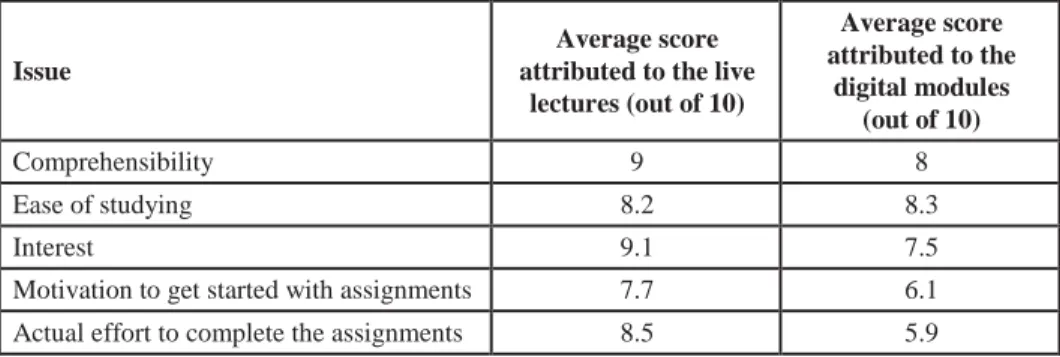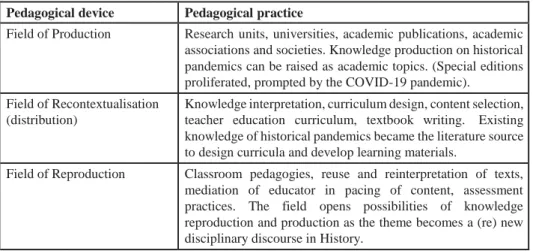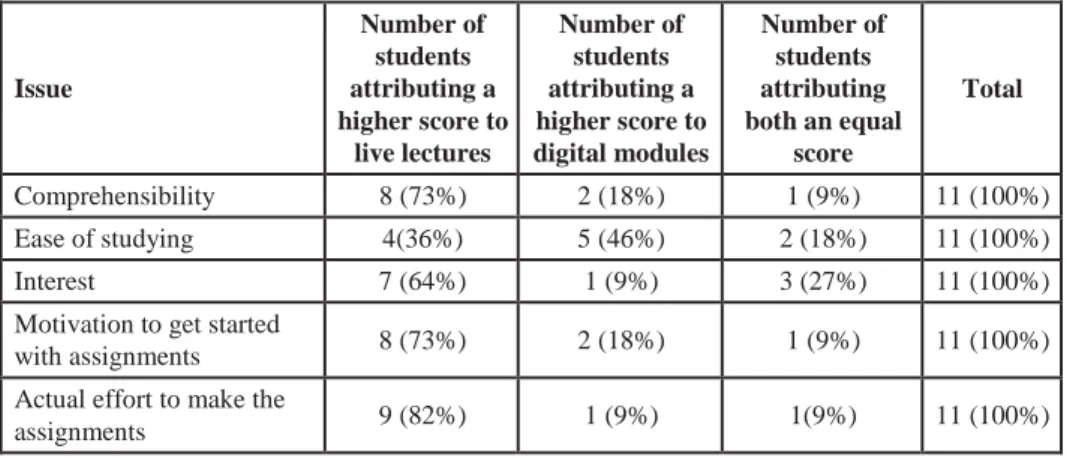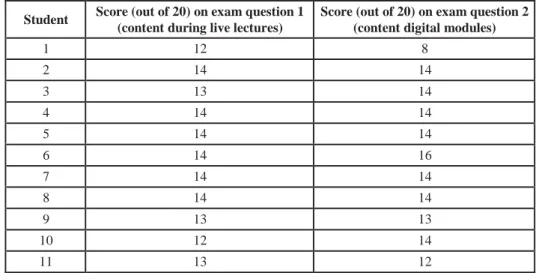Teaching and learning history in the time of the COVID-19 226 pandemic: Reflections of a history teacher in a senior school. The last academic paper related to COVID-19 and history education is by Siebörger and Firth.
Decolonising images? The liberation script in Mozambican history textbooks
The third chapter covers the "Arab Presence", the "Portuguese Penetration" and the "Prazos" in the Zambezi River Valley. However, the erasure of women's agency is particularly evident in the current textbook.
Understanding the complexity of teaching the genocide against the Tutsi through a career life story
Ethnicity" is therefore considered by the Government to be one of the causes of the genocide. This position of procedural neutrality helped the learners to understand the complexity of carrying out the genocide.
Synchronous interactive live lectures versus asynchronous individual online modules. A comparative analysis of
Regarding the comprehensibility of the course content (1), live lectures allowed the instructor to provide explanations to the students; direct questions and answers for cooperative interaction;. Regarding the participants' perceptions, the results show that the live lectures obtained better average scores for the perception of the comprehensibility of the course, for the students' interest and motivation, and for the effort they made to engage with the course and then the digital one. modules. The only exception concerns the perception of how easy it is to study the course: in this case, the digital modules achieved a (very slightly) higher score than the live lectures (see Table 1).
Also, in general, more students attributed higher scores to the live lectures than to the digital modules on the above topics, again apart from the perception of how easy it is to study the course (see Table 2). Regarding the perception of the comprehensibility of the course content, the students attributed an average score of 9/10 to the live lectures and 8/10 to the digital modules. The perception of the ease of studying the course was the only issue, with the digital modules scoring (very slightly) better than the live lectures.
A large majority of students indicated that live lectures stimulated their interest more than digital modules. While all students indicated that they were interested in the course material, most of them nevertheless preferred an enthusiastic lecturer and collaborative interaction to the individual completion of digital modules.

Sustaining the University of Johannesburg and Western Sydney University partnership in the time of COVID: A
Sustaining the University of Johannesburg and Western Sydney University partnership in the time of COVID: A. This article presents a qualitative case study of how COVID has changed educational engagements between UJ and WSU.1 The administrations of both universities have bilateral mobility of students and researchers support. . 1 RE Stake, “Qualitative case studies”, NK Denzin & YS Lincoln (eds.), The Sage Handbook of Qualitative Research (Sage Publications Ltd, 2005), pp.
International education may have been pursued before World War II, but its more modern incarnation emerged in the post-World War II era, when a number of countries, including Australia, established government-sponsored student exchange programs using the language of international cooperation.2 The US Fulbright Program and Australia's Colombo Plan – both of which supported inbound and outbound flows of people – are examples of government efforts to use study abroad for diplomacy.3 Australia developed a study abroad program to strengthen foreign relations with newly independent Asian countries to facilitate. The Australian government shifted its focus to Africa in the mid-2010s when the federal government launched the Australia-Africa Advisory Group in September. Foreign Minister Julie Bishop added urgency to the group when she stated that Australia had the strategic and economic importance of the region.23 As interest in Africa soared, the need for educational engagement programs for both Australians and Africans became a strategic national priority. COVID has challenged field-based study abroad opportunities, such as the KNP trip that WSU has been organizing with UJ and the Nsasani Trust in the Kruger since 2015.
As Leask says, “the pandemic has highlighted how connected the world is and how important it is today, and will be in the future, for all graduates (and students) to be able to work together across national borders and cultural as professionals and citizens. , regardless of their ability to be (physically) involved in mobility programs".36. A three-part series between UJ and WSU has been developed to replace this workshop, but due to the field requirements of the first workshop, Green Futures has had to be delayed indefinitely.
A self-study of pedagogical experiences in History Education at a university during the COVID-19 pandemic
Keywords: History education; COVID-19; Multimodal model of online education; Digital platforms; Higher Education; Distance education;. Through participant observation, I identified, deconstructed and interpreted aspects of using online education to teach my history education modules. This module thus aimed to provide history education students with the opportunity to teach themes from modern history.
These presentations facilitated the theoretical and conceptual foundations of using film and ICT in History Education. This question allowed students to critique issues related to the use of ICT in History Education. Another major challenge was the reluctance of my History Education9 tutors to engage with digital platforms.
As part of the terms of this program, contract staff were appointed to assist me with my history education modules. Ultimately, I fully support the use of online education to teach history education at the tertiary level.
Teaching History teachers during COVID-19: Charting poems, pathways and agency
SSII is also a content course covering the history of the United States of America (from Columbus to Black Power). The question was "Who owns the country known as the United States of America in 2020?" The space I gave in answering the question was that the students could answer in essay format or in any other creative format (such as poetry, as used in the lectures) as long as it was accompanied by an argument statement explaining the argument – which should be clear in the creative piece. The idea for a decolonial history teacher charter initially came from the students themselves, during the face-to-face lectures at the beginning of the year.
As we scrolled online, we came across a WhatsApp group that had 38 of the 39 students in the class. We discussed assessments – the dates had been pushed back, but the need for grades, the need for assessments, the need to consolidate the work we had done in the first semester did not disappear. Also, we discussed what we would do about the Decolonial History Teacher Charter process.
In each of the 6 responses selected for analysis there was a crucial point where this codification and decoding took place – reflection in practice. These can be taken as an example that this online learning worked – the students did extremely well in their tasks, integrated the views of the knowers into their familiar views of their world, and transposed a trained historical view on their situations, situations local and global, and how this might affect their classroom.
Online learning challenges postgraduate certificate in education History students faced during COVID-19 at the
University of Zululand
With online learning and teaching, PGCE History students had to learn on their own, without face-to-face contact with their lecturers. Online learning forced PGCE History students to stay at home and continue their studies. Online learning gave way to face-to-face learning, which most PGCE History students were pedagogically and culturally unfamiliar with.
What also emerged from the data was that the economic conditions of the participating PGCE History students were a challenge for online learning. If the library was accessible, PGCE History students would have used it to supplement their online learning difficulties. Another challenge of online learning was the interruptions at home, which made learning inconvenient for PGCE History students.
Another issue that made online learning challenging for PGCE history students was the lack of parental support. A final issue that made online learning a challenge was the economic situation of many PGCE history students.
Teaching historical pandemics, using Bernstein’s pedagogical device as framework
Poor historical consciousness of the 1918 Spanish Flu is a contested issue in the literature and of direct interest to the 21st-century critical historian. As a guide for selecting historical knowledge of pandemics, what follows is a review of the literature relevant to historical inquiry into pandemics in the past. What Markel refers to here is the availability of knowledge at the time of the pandemic.
Bernstein's pedagogical device serves as a theoretical framework for conceptualizing the integration of historical knowledge of pandemics as part of the History curriculum. Bernstein's notion of the pedagogical device is used in this article to integrate historical knowledge of pandemics into the Upper Stage History curriculum. 31 P Singh, 'Pedagogical knowledge: Bernstein's theory of the pedagogical device', British Journal of Sociology of Education pp.
Introducing knowledge of historical pandemics would require appropriate textbooks and teachers who can demonstrate deep conceptual understanding of the subject. What follows is a synthesis of History teachers' responses, presented as an entry point for considering Bernstein's pedagogical device as a framework for integrating the history of pandemics into the History curriculum.

Teaching about dying and death: The 1918 Flu epidemic in South Africa
The question is whether it is reasonable to teach about death and dying on this scale in the classroom. I believe—it was reported and I believe—that thousands of them were simply buried in graves dug on the beach in the sand, and that they are still there. That [Spanish flu] is not the flu at all [Common flu starts with] temperature, headache, back pain, muscle pain, and that's all.
A regiment of soldiers dug graves all day in the Woltemaad [sic, Cape Town] cemetery, which is miles long. In the Cape Peninsula at the height of this terrible plague there were ten thousand deaths in a fortnight (Phillips. This enables a less demanding approach to the evidence and aims to strengthen the understanding of the content of the sources while encouraging students to look at the positive aspects in the sources.
Students will consciously or unconsciously draw on everything they have experienced in Pandemic 2020. Explain what it is that makes you empathize with the person (or people) in the passage.

